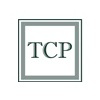BlackRock TCP Capital Corp (TCPC) Q2 2024 Earnings Call Highlights: Navigating Challenges with ...


Adjusted Net Investment Income: $0.38 per share.
Annualized Net Investment Income Return on Average Equity: Approximately 14%.
Third Quarter Dividend: $0.34 per share, with a coverage of 112% based on Q2 adjusted NII.
Net Asset Value (NAV) Decline: 8.4% in the second quarter.
Non-Accrual Status: Increased from 1.7% to 4.9% of fair value.
Net Realized Losses: $35 million for the quarter.
Net Unrealized Losses: $52 million, primarily due to specific companies.
Weighted Average Internal Risk Rating: 1.5 as of June 30, 2024.
Capital Raised: $325 million of fixed rate unsecured debt at 6.95% in May 2024.
Investments in Q2: $130 million, with $124 million in senior secured loans.
Weighted Average Annual Effective Yield: 12.4% for the portfolio.
Gross Investment Income: $0.84 per share.
Operating Expenses: $0.42 per share.
Available Liquidity: $780 million, including $585 million in available capacity and $195 million in cash.
Net Leverage: 1.13 times, within the target range of 0.9 to 1.20 times.
Release Date: August 07, 2024
For the complete transcript of the earnings call, please refer to the full earnings call transcript.
Positive Points
BlackRock TCP Capital Corp (NASDAQ:TCPC) delivered an adjusted net investment income of $0.38 per share, with an annualized net investment income return on average equity of approximately 14%, which is at the high end of their historical ranges.
The Board of Directors declared a third quarter dividend of $0.34 per share, implying a dividend coverage of 112% based on second quarter adjusted NII.
TCPC successfully raised $325 million of fixed-rate unsecured debt at an attractive rate of 6.95% in May 2024, enhancing their capital position.
The company invested $130 million in the second quarter, with a significant portion in senior secured loans, reflecting a 40% increase in deployment activity compared to the previous year.
TCPC's portfolio remains diversified, with 91% of investments in senior secured loans and 93% of debt investments in floating rate loans, providing stability and income potential in a rising rate environment.
Negative Points
Net asset value (NAV) declined by 8.4% during the second quarter, with six portfolio companies added to non-accrual status, increasing non-accruals from 1.7% to 4.9% of fair value.
Net realized losses for the quarter were $35 million, primarily due to the restructuring of investments in Thras.io and Hylan.
Net unrealized losses totaled $52 million, driven by markdowns on investments in companies like SellerX, Pluralsight, and Lithium.
The weighted average annual effective yield of the portfolio decreased to 12.4% from 13.4% in the previous quarter, indicating some yield compression.
The increase in non-accruals negatively impacted earnings per share by approximately $0.08, reflecting ongoing challenges in certain portfolio segments.
Q & A Highlights
Q: How much did the increase in non-accruals affect EPS in the quarter? A: The increase in non-accruals affected EPS by roughly $0.08 per share. This was the full quarter impact as all non-accruals were taken at the beginning of the quarter. - Rajneesh Vig, CEO
Q: Were the non-accruals primarily from legacy TCPC or from the merger with BCIC? A: The portfolios were largely overlapping at the time of the merger, except for a few legacy BCIC positions. Therefore, the non-accruals are not distinctly from either legacy TCPC or BCIC. - Rajneesh Vig, CEO
Q: What is the target range for leverage, and is it currently an issue? A: The regulatory net leverage is 1.13 times, which is within our target range of 0.9 to 1.2 times. Leverage is not an issue, and we are comfortable with our current position. - Erik Cuellar, CFO
Q: Why did you decide to increase investments this quarter despite the merger and non-accruals? A: We did not accelerate our deployment; it was normal activity. Some existing portfolio companies grew and refinanced, which led to increased investments. - Philip Tseng, President
Q: Are there other industry concentrations in the portfolio similar to the Amazon aggregator space? A: Beyond the aggregator space, we do not see similar correlations. We have a weighting to industries we like, which generally has worked well. The aggregator space is unique, and we do not see a trend line in the portfolio. - Rajneesh Vig, CEO
For the complete transcript of the earnings call, please refer to the full earnings call transcript.
This article first appeared on GuruFocus.